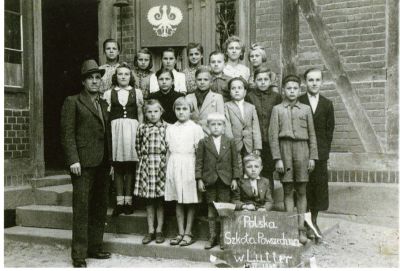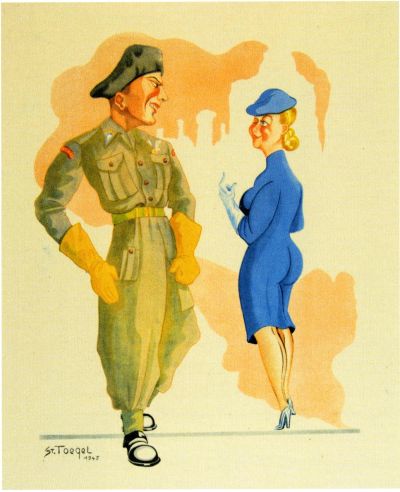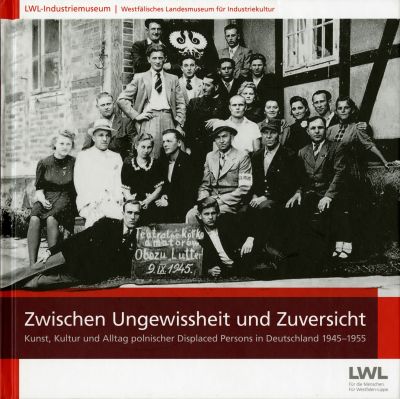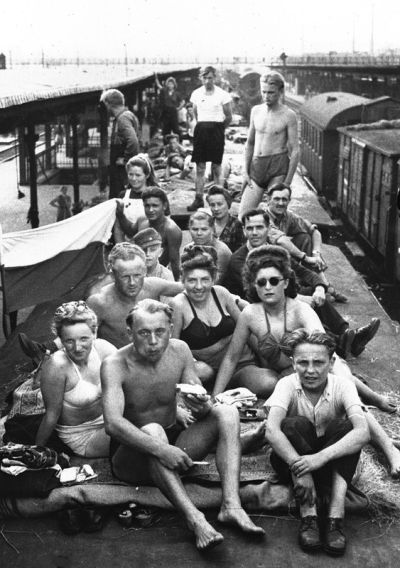New! WebQuest for education

Tasks
In this WebQuest you will independently learn various aspects of everyday life and the framework conditions of Polish Displaced Persons in DP camps in Germany between the end of the war in 1945 and the early 1950s.
In doing so, you will take on the role of a scholarly journalist who has been commissioned by a news magazine to write a title story on the everyday life of Polish DPS in Germany.
To enable you to do this the WebQuest will offer you material on the following themes:
- In the waiting room - Polish DPs caught between repatriation and resettlement
- Prejudices and revenge - the DPs and the Germans
- Coping with scarcity - living conditions in the camps
- Personal affirmation - art, culture and entertainment
- Looking to the future - school and further education, training and professions
- The Emsland - a "Polish occupying zone"
The leading question on the individual themes is in the same sequence:
- In the waiting room:
The Allies programme of immediate measures for Displaced Persons had two aims: on the one hand they should be cared for, supported and assembled; on the other hand the Allies aimed to organise an orderly return of DPs to their home countries as quickly as possible. Since these duties could not be solved by the military forces alone, in November 1944 the Allied Supreme Command made a contract with the previously founded UN aid organisation, UNRRA. However, since many things did not run according to plan, in 1947 UNRRA was replaced by IRO. Polish DPs in particular found themselves once again in a “waiting room”, caught between repatriation and emigration.
How and why did the attitudes of the Allies towards DPs change in the course of time?
- Prejudices and revenge:
“Every case of violence committed by foreigners, etc, should be immediately reported.”
This regulation was issued on 27 April 1945 by the occupying forces in the first information sheet sent to the mayors in the rural district of Meppen: it was an attempt to prevent assaults by DPs, as well as to maintain peace and security from the very start.
Criminal acts in the area of tension between Nazi racial ideology and a desire for vengeance made up the defining moment in relations between DPs and Germans. But: were the DPs really as they were feared by the Allies and claimed by the Germans? Were there only tensions or was there also a peaceful coexistence?
- Coping with scarcity:
In 1996 Józef Szajna, a Polish artist and Professor at the Warsaw Academy of Fine Arts, wrote the following to Andreas Lembeck in his memories of the time he spent at the DP camps in the Emsland: “The thing that wasn’t missing was DDT - a substance against bugs”.
How were supplies and the life in a DP camp organised?
- Self affirmation:
“Yes, we were prisoners. We had been through many concentration camps: Auschwitz, Lublin, Dachau, Buchenwald; people had hauled us out of the deepest hole of the war. We had lived for years on end and had nothing of our own. Not even ourselves. But one thing we did have - a homeland.”
These were the words used on 15 June 1945 by Tadeusz Borowski, one of the most important Polish writers of the generation who lived through the Second World War, to describe the situation of Polish DPs in Germany.
In the light of this statement how important were art, culture and entertainment for DPs in the camps?
- Looking to the future:
In 1996 Józef Szajna, a Polish artist and Professor at the Warsaw Academy of Fine Arts, wrote the following to Andreas Lembeck in his memories of the time he spent at the DP camps in the Emsland: "We wanted to learn, catch up on the lost years of the war".
What basic and further training opportunities were there for people in the Polish DP camps? What future perspectives were associated with them?
- The Emsland:
In 1996 Józef Szajna, a Polish artist and Professor at the Warsaw Academy of Fine Arts, wrote the following to Andreas Lembeck in his memories of the time he spent at the DP camps in the Emsland: “At last we could live amongst ourselves as if we were in Poland.”
Poles were living together for around two years in the Polish enclave of Maczków. How did these special conditions come about? What did Maczków mean to its inhabitants and what were the main characteristics that made this town different from other camps?
Because of the many aspects and the restricted time available you will initially work on the theme in pairs or small groups (maximum of four persons per group). In this way you will be able to gather your information and turn it into a joint title story.





